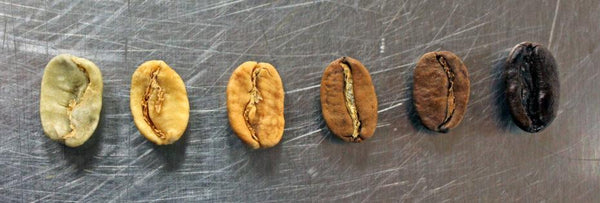
Drying phase during roasting
Roasting transforms coffee from a green seed to the aromatic, flavorful bean we love.
But what happens during the process?
When we roast coffee beans, they undergo physical and chemical transformations. In this first part of a two-part series, learn more about the physical changes that take place inside the roaster.
The drying phase starts immediately after the turning point. (When you add cold beans to a roaster, the heat inside the machine falls before rising again. The point at which it begins to rise is the turning point.) During drying, water content begins to vaporize and pressure starts to build inside the beans.
When you see the coffee beans start to turn brown, the Maillard reaction has started. This happens at around 150°C.
During the Maillard reaction, gases including carbon dioxide, water vapour, and some volatile compounds are created. The internal pressure increases enough to break the cell walls of the beans, making a pop. This event is known as the first crack.
Melanoids begin to develop during this stage. As well as changing the colour of the beans, they contribute to the final mouthfeel of the coffee.
DevelopmentAfter first crack, the roast changes from an endothermic reaction (the beans absorb heat from the drum) to an exothermic one (the beans release heat).
During this stage, the physical transformations continue – beans increase in porosity, oils migrate to the walls of the cell, and the colour darkens.
To get the most out of this process you have to understand your Roasting equipment like the back of your hand.
At 36P we certainly understand our roasters.

